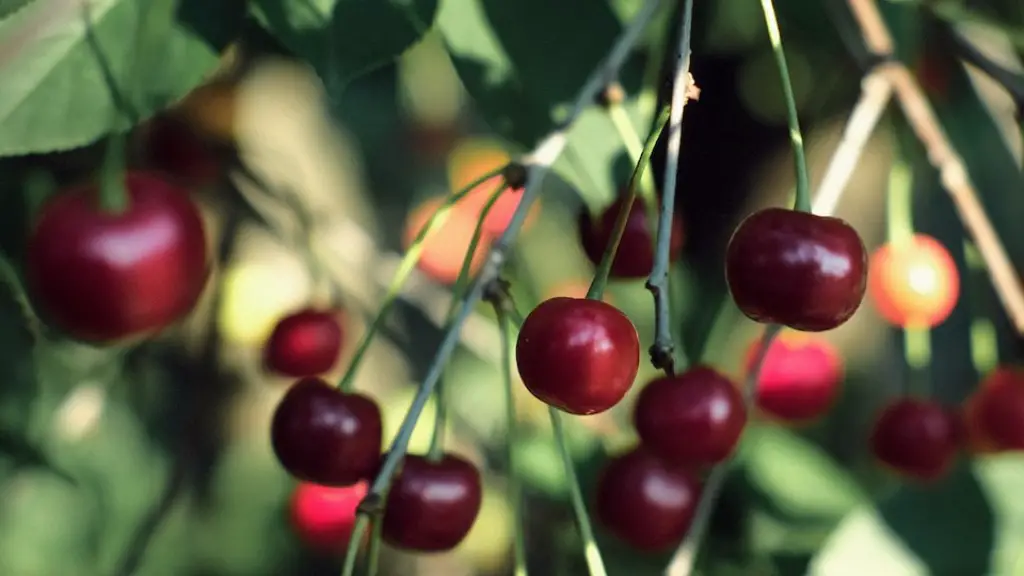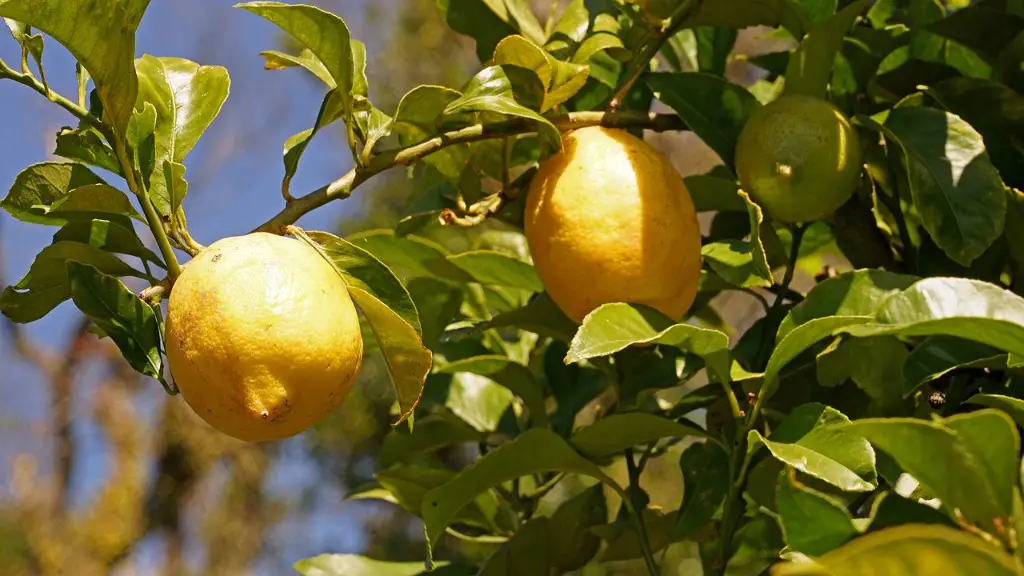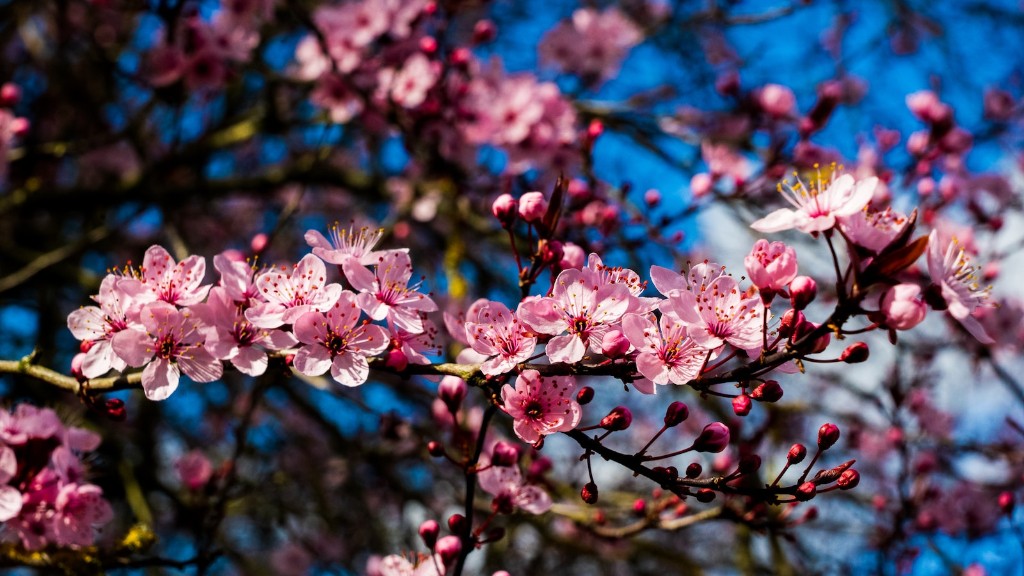Soil Requirements for Cherry Tree
Cherry trees are typically classified as a low-maintenance tree, but adequate soil nutrition and moisture is essential for successful cultivation. The cherry tree is an adaptable species, and does especially well in U.S. Department of Agriculture Plant Hardiness Zones 4-8. When planting, look for a location with deep, moist, well-drained soil and full sun to encourage strong root growth and blooming. Sandy loam soils with a good content of organic matter, aged compost, cow manure or peat moss enhance root growth and water absorption. Amend your soil before planting if it is heavy and filled with clay, as it may not easily accept water and nutrients.
Steps to Grow Cherry Tree from Seed
Growing a cherry tree from seed is an inexpensive way to add a few trees to the landscape, while avoiding the costs to purchase and transplant mature trees. Start your cherry tree in late winter, when the cherry seed is in a state of dormancy, by gathering the freshest cherry pits possible. A valid way to plant a cherry tree from seed is by pre-sprouting them in a warm, moist area. To do this, fill a quart-sized, clear plastic drinking cup with some moistened potting soil or damp peat moss, and bury several seeds about two or three inches deep. Place the container in a sunny window and water from the bottom up when the soil dries out. The soil should stay moist and not soggy for the pre-sprouting process to be successful.
Preparing Seeds for Planting
Once the root has sprouted, it’s time to move the cherry pits outdoors. Prior to planting into the ground, several weeks of cold stratification is necessary. The easiest way to emulate winter’s cold stimulation is to refrigerate the seedlings in a sealed sandwich-size baggie with some moist paper towels, which is necessary to move the seedlings out of dormancy and ready them for germination outdoors. Burry the seedlings in the ground to a depth of three inches and space at least 4-5 feet apart. The new saplings require plenty of sun and scatter a low-nitrogen fertilizer, such as bone meal each spring until they reach two or three years of maturity.
Watering and Pruning
Cherry trees require ample water to sustain healthy growth and development. Water your newly planted sapling every 5 to 10 days and deeply, if rainfall is scarce. As the tree grows, reduce the frequency of watering and spread it over the sapling’s root zone. Fertilize in early spring, once a season for the first three years, and prune the weak or crossing branches to encourage growth and stability. The tree grows quickly and needs up to six feet of space from other trees or buildings.
Common Diseases and Pests
Despite being a hardy tree, cherry trees may suffer from some diseases and pests, also. Crown rot, fungal and bacterial disease can occur if the tree is planted in heavy, poorly draining soils. Poor pruning practices and over-mulching may create wet conditions conducive to the growth of fungus and bacteria. Spider mites and aphids rarely attack cherry trees. Horticultural oils, sulfur and other insecticides can help prevent infestations, if necessary.
Harvesting Fruit
The cherry tree will generally bear fruit in three-five years and a healthy tree should produce a bumper crop of about 25-30lbs of cherries for several weeks when it blooms. Different varieties of cherries ripen at different times, so do a bit of research and planting accordingly to get a longer harvest season. If a snow crop or early ripening cherry varieties were planted, one can harvest cherries as early as the previous season’s last frost.
Protecting the Tree During Colder Temperatures
Cherry trees are relatively hardy at cold temperatures, but extreme conditions can cause the fruiting spurs to die back and even kill the tree if precautions aren’t taken. Trees that are young tend to be more delicate and frost more easily than mature trees. During the winter, cover young trees in burlap and make sure to water the trees before the ground freezes, as this will protect the roots from dying back.
Cultivars to Choose from
When selecting a cherry tree for the home landscape, consider the types of cherries and their uses. There are sweet cherries, sour cherries, and hybrid varieties available for purchase. Sweet cherries, such as the Bing variety, develops sweet, dark-red cherries that are great for snacking. Sour cherries, such as the Montmorency variety, are more tart and best used in pies, jams and sauces. There are also several hybrid cherries, such as the Clutier, Lapins and Lambert varieties, which are a cross between sweet and sour cherries.
Fertilizing Cherry Trees
Fertilizing once a year is required to ensure proper nutrition throughout the growing season. Spread a prolonged-release fertilizer around the tree, beginning with a light amount and gradually increasing as the tree matures. Spread the fertilizer around the drip line of the tree, and keep it about 2-3 inches away from the trunk. If possible, apply the fertilizer on a warm, dry day, and plan to water the tree several times to wash in the fertilizers and nutrients.
Propagation of Cherry Trees
Propagation of cherry trees is typically done in two ways: through grafting and layering. Grafting is by far the most common technique used, in which a piece from a scion is attached to a rootstock. The scion is a portion of mature cherry tree with a certain desirable trait and the rootstock is another tree that has strong roots. The stem of the scion is then grafted to the rootstock and then buds will emerge, giving way to a new cherry tree.
Caring for the Tree Throughout its Lifespan
Once established, cherry trees need little maintenance. Water it deeply as needed, and prune any dead, broken, or diseased parts. An annual pruning should be done in early winter before the sap begins to flow, to shape the tree and to ensure better light penetration. Additionally, keep a two-inch layer of mulch, such as wood chips or straw, around the base of the cherry tree, to help the soil retain moisture and act as a natural weed suppressor.


